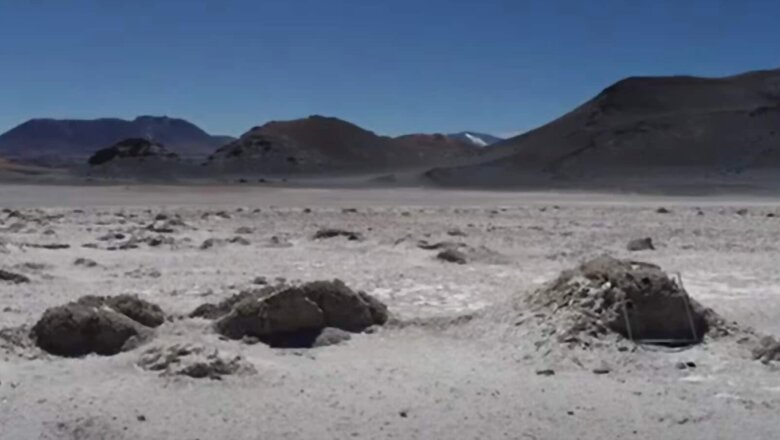
views
Life beyond Earth has always been a fascinating subject intriguing the masses. Now, senior researchers at USA’s SETI Institute senior have discovered a breakthrough in the search for life beyond Earth. The team, led by Kim Warren-Rhodes, was able to do this by training machine learning models to recognize and predict biosignatures in data that have not been previously studied. According to the research published in Nature Astronomy, by combining statistical ecology with AI/ML, the researchers were able to locate and detect biosignatures up to 87.5 per cent of the time. This is a significant improvement over random searches and reduces the area needed for search by up to 97 per cent. Why is this a crucial development? Because researchers have limited opportunities to collect samples or use remote sensing instruments when hunting for life beyond Earth.
“Our framework allows us to combine the power of statistical ecology with machine learning to discover and predict the patterns and rules by which nature survives and distributes itself in the harshest landscapes on Earth,” Rhodes said, quoted Science Daily. She also added, “We hope other astrobiology teams adapt our approach to mapping other habitable environments and biosignatures. With these models, we can design tailor-made roadmaps and algorithms to guide rovers to places with the highest probability of harbouring past or present life — no matter how hidden or rare.”
The team used the Salar de Pajonales, a hyper-arid, dry salt lakebed on the border of the Chilean Atacama Desert and Altiplano, as a Mars analogue to map sparse life hidden in salt domes, rocks, and crystals. A total of 7,765 images and 1,154 samples were gathered by the team. They also tested instruments to detect photosynthetic microbes that exude pigments. This is how they were able to represent one possible biosignature on NASA’s Ladder of Life Detection.
By training convolutional neural networks (CNNs) to recognize and predict macro-scale geologic features and micro-scale substrates most likely to contain biosignatures, the team successfully integrated datasets at vastly different resolutions from orbit to the ground. Furthermore, they tied regional orbital data with microbial habitats, paving the way for machine learning to assist scientists in the search for biosignatures in the universe.
The results affirmed that microbial existence at the Pajonales earthly analogue location is not haphazardly distributed. Instead, it is concentrated in patchy biological hotspots strongly linked to water availability at kilometre to centimetre scales. The team’s next research objective is to test the CNNs’ ability to predict the location and distribution of ancient stromatolite fossils and halite microbiomes with the same machine-learning programs. This is a breakthrough step towards locating life beyond Earth efficiently.
Read all the Latest Buzz News here
















Comments
0 comment